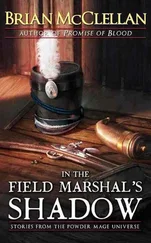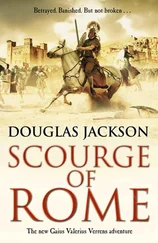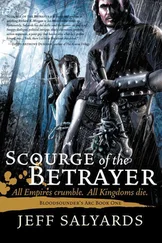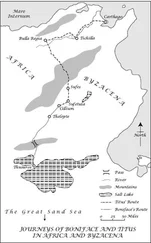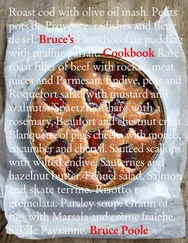Over the years, I’d had my share of squabbles with Lomax, but I missed him. He’d been summarily dismissed because he possessed two qualities that our new owners could not tolerate-integrity and a hundred-and-twenty-thousand-dollar salary. Living on Social Security and savings now, he and his wife recently sold their big house in Cumberland and moved into a small condo in East Providence.
Twisdale glowered at me, then gave it up when he saw it wasn’t working.
“You’re late,” he said.
“Just by five minutes.”
“Which means you’ll be docked an hour’s wages. Company policy.” He sucked in a deep breath and blew it out through his nose. “Do you know why I put up with you, Mulligan?”
“Not a clue.”
“Because you’re productive. You turn out twice as much copy as any of your colleagues.”
“Do you know why, Chuckie-boy?”
“I suppose you’re going to tell me.”
“It’s because you fired most of the paper’s experienced reporters and replaced them with a skeleton crew of fresh j-school grads. Sure, they work cheap, but you get what you pay for. Most of them don’t know the difference between a deadline and a chorus line.”
Another glower.
“I know what you’re up to, Mulligan.”
“You do?”
“You’re trying to bait me into firing you so you can join the rest of the moochers who live off food stamps and unemployment checks.”
Chuckie-boy was on to me. If I quit, I wouldn’t qualify for unemployment. If he let me go, I could live off Uncle Sugar while I figured out what the hell to do next.
“Well,” he said, “it’s not going to work.”
“Oh, darn.”
“There’s a stack of press releases on your desk. Get cracking.”
I’d never worked for anyone who said “get cracking” before, and I didn’t like it. It made me want to crack his head. As I turned to leave, he pulled a bottle of Purell hand sanitizer from his desk drawer and shot a dab into his palm. Funny. I didn’t remember us shaking hands.
The football-field-size newsroom felt hollow as I trudged to my cubicle past the handful of reporters and editors still employed there. Twenty-two years ago, when I hired on as a cub reporter, the place bustled day and night. The news department numbered three hundred and forty then, and they were the very best at what they did, making The Dispatch one of the finest small-city metros in the country. But decades of declining circulation and advertising revenue had taken a toll. By the time the local owners finally gave up and sold out last year, the news staff had already been reduced to eighty. At the time, it was hard to imagine it could get any smaller. Our new corporate overlords promptly cut it in half.
They accomplished this-yes, they trumpeted it as an accomplishment-by eliminating the copy desk, firing the entire photo staff, and giving cameras to the reporters, most of whom didn’t know which end of the lens to look through. Now our stories, along with those from the chain’s twenty-seven other piece-of-shit dailies, were e-mailed to GCHI’s “international editing center,” located in a strip mall on the outskirts of Wichita. There, junior-college dropouts with a tenuous grasp of English grammar checked them over and e-mailed them back. Because they had never laid eyes on Providence, thought Rhode Island was an island, and couldn’t locate New England on a map, the chances of them catching our green reporters’ mistakes were close to zero.
On today’s front page, Aborn Street appeared as Auburn Street, State Senator Parker Smyth was identified as U.S. Senator Parker Smith, Burnside Park was rechristened Sideburns Park, and the Woonasquatucket River was spelled three different ways, each of them wrong.
Not much real journalism was getting done either. Gone were the days of aggressive political and criminal justice reporting, sophisticated science and religion writing, blanket coverage of all thirty-nine Rhode Island cities and towns, and blockbuster investigations that had sent scores of politicians, mobsters, and crooked businessmen to the gray-bar hotel. Now the news pages were filled with rewritten press releases, crime news cribbed from police reports, fawning features about our few remaining advertisers, and columns of clumsily cut wire copy. Meetings and press conferences were often covered by monitoring the local-access cable TV channel. Our reporters were seldom allowed out of the office, dispatched only when a three-alarm fire broke out or a grisly murder was committed-this thanks to our former TV producer’s “if it bleeds it leads” news philosophy. On most days, the longest story in the paper was the list of corrections on page two. I used to be proud to work at The Dispatch. Now it was a freaking embarrassment.
Late that afternoon, I was rewriting a press release touting the Providence Place Mall’s fabulous upcoming St. Patrick’s Day celebration (“Fun for the whole family!”) when Chuckie-boy summoned me again.
“Channel 10 is saying the cops have fished a body out of the Seekonk River just above the falls in Pawtucket.”
“It’s the Blackstone River,” I said.
“Excuse me?”
“It becomes the Seekonk River below the falls. Above the falls, it’s called the Blackstone.”
“Whatever. It’s close to here, right?”
“Less than ten miles.”
“I need you to get out there ASAP.”
“Soon as I find my sunglasses. I’ve been stuck behind a desk so long that my eyes are unaccustomed to daylight.”
The Blackstone rises at the confluence of Mill Brook and Middle River in the old industrial city of Worcester, Massachusetts, tumbles southeast through a string of suburbs and rural villages, and enters Rhode Island at the decaying mill city of Woonsocket. Then it scoots south through the bedroom communities of Cumberland and Lincoln, mopes past the triple-decker slums of Central Falls, and finally rolls into the city of Pawtucket, where Samuel Slater erected the first water-powered cotton mill in America in 1790. There, forty-eight miles from its source, it spills over a low dam into the tidal Seekonk River.
In colonial times, the Blackstone was alive with Atlantic salmon and the lamprey that preyed upon them; but by the mid-1800s it had become an open sewer, running thick with effluent from textile mills, solvents and heavy metals from jewelry and woodworking shops, and human waste from the cities and towns along its course. In 1990, the Environmental Protection Agency branded it the most toxic river in America, and recent attempts to clean it up have been only marginally successful. Today it is designated a class C river, unsafe for swimming but suitable for boating and fishing if you don’t mind the odor and have the good sense not to eat what you catch. That doesn’t deter immigrant anglers who pull carp, one of the few critters hardy enough to survive in it, out of the murk and bring them home to poison their hungry children.
I cruised down Roosevelt Avenue past Pawtucket City Hall, a grotesque pile of masonry that gives Art Deco a bad name, and pulled Secretariat, my pet name for the Bronco, into the nearly empty Slater Mill Historic Site parking lot. There, a uniformed cop was waving away two Mystic, Connecticut, school buses crammed with middle-school kids who were too preoccupied with their iPhones to look out the windows. No field trip today, boys and girls. Take a rain check. The docents at the Slater Mill museum will bore the hell out of you with their looms and shuttles at a later date.
I grabbed my Nikon, climbed out of Secretariat, and flashed my press pass at the uniform.
“You’re gonna have to wait over there,” he said, pointing toward two TV vans and a clutch of reporters and photographers who didn’t seem to be doing anything.
Читать дальше

